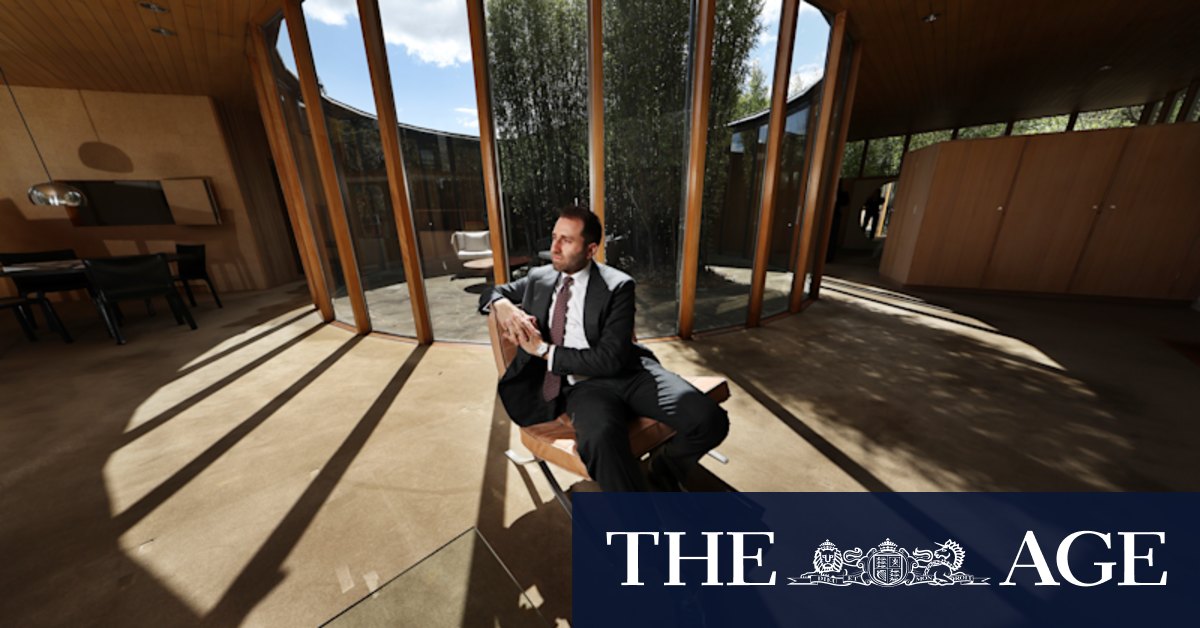Both buildings have a symmetrical arrangement with a central entry. “For the NGV, it’s the archway which goes into the water wall, while for the Hill Street house, it’s a single, very oversized door,” Lee says.

The NGV archway.Credit: NGV
They both used similar materials such as timber panelling on the walls, which remains a fixture of the Hill Street home but has been removed from the gallery.
While the Toorak flat mostly reflects Grounds’ original design (Grounds lived there with his family until his death in 1981), it has been through several iterations.
When cardiologist Dr Martin Hiscock bought the home in 2003, it had been modernised and become what he described as “nothing special”. He visited the State Library searching for the original drawings, and over one year, faithfully restored the home to its former glory.
“I put the cork wall back in the dining room, found the original tiles for the bathroom – I really wanted to bring back what Roy had done and intended. We even found the original 1950s plumbing,” Hiscock says.
Betty Grounds was still alive, and so Hiscock brought her to see the results. “She came in and said, ‘Why, it looks just like new.’”
Jellis Craig Stonnington selling agent Carla Fetter says that in 21 years in the industry, she has never sold a house like it.
“It’s very difficult for a real estate agent to value this – what it could be worth for one person would be vastly different to the next,” she says. “It’s like buying a piece of art.”
Loading
The guide is $2.3 million to $2.5 million.
Designers, architects and architectural students have flocked to the open days to experience something they’ve only seen in textbooks.
“This house hasn’t been offered near on 20 years, and it’s a very rare opportunity,” Fetter says. She has sent out seven contracts, some to downsizers who love mid-century architecture, as well as “younger bachelors who can see themselves meeting their future wife here”.
Owning Grounds’ house means access to a man who changed the way we interact with light.
Today, a sliding door leading to an outdoor space is commonplace. Before Grounds, houses were “dark and gloomy … [with] little windows, very high ceiling rooms that didn’t get a lot of natural light”, Lee says. “Roy made it possible for people to move from inside to outside rather seamlessly.”
For Danos, letting the house go has been emotional. “It’s really a work of art,” he says. “It’s time for it to go to someone who will cherish it and really appreciate it the same way we have.”

